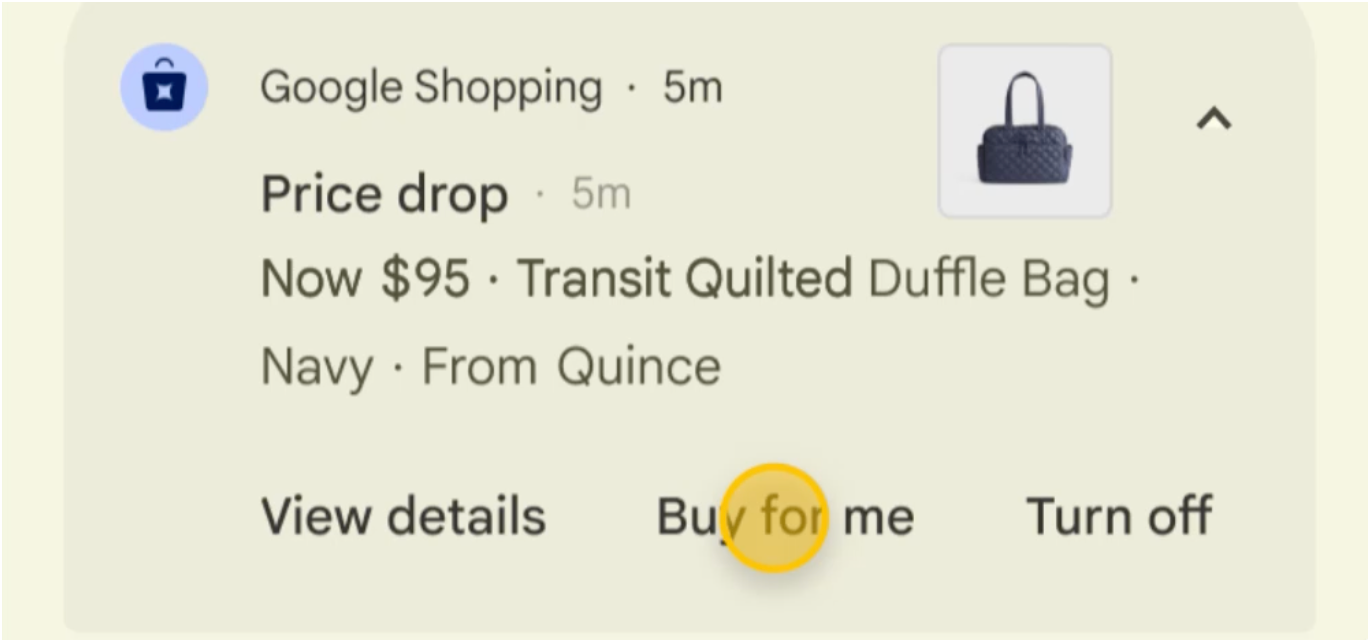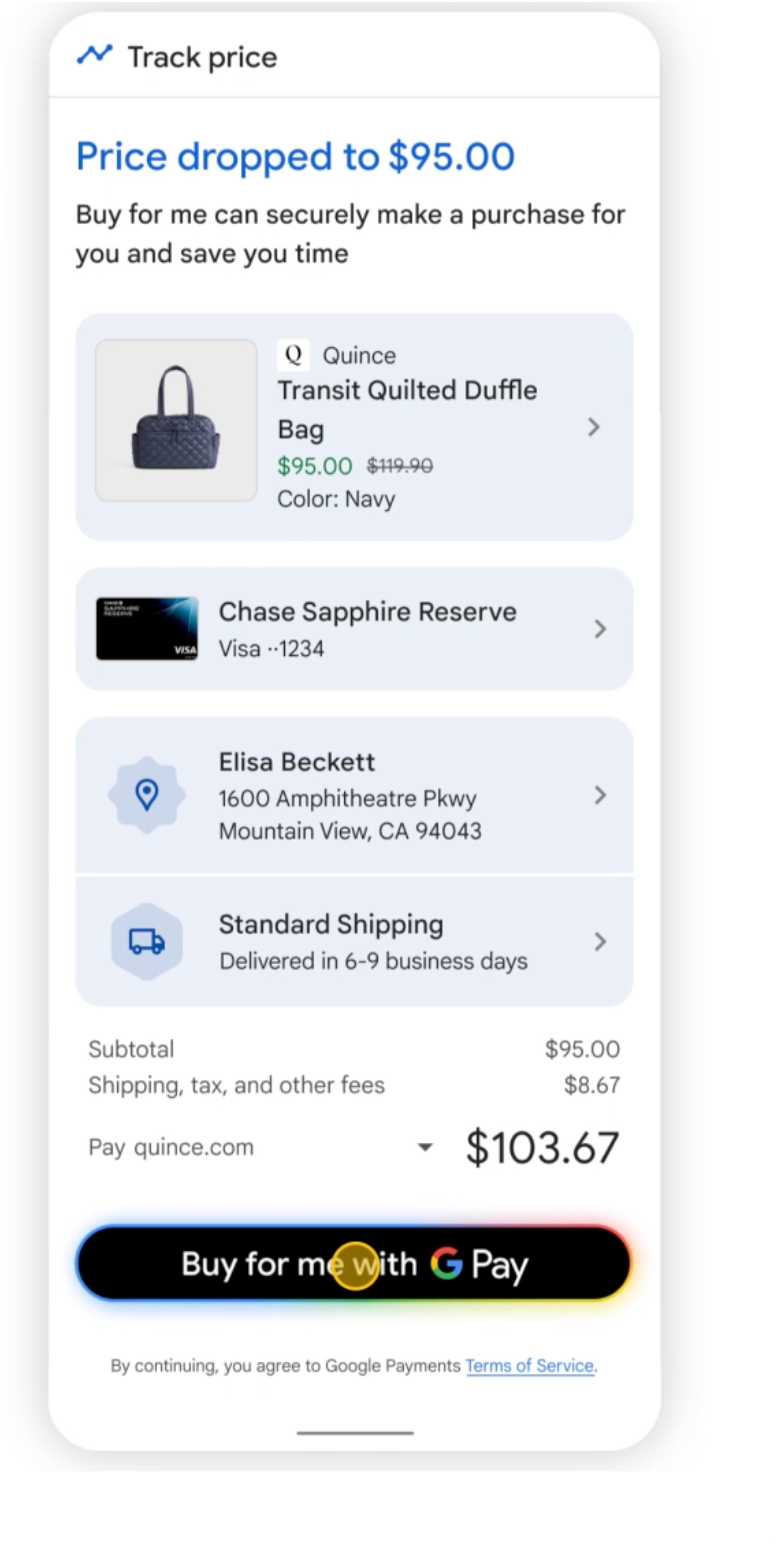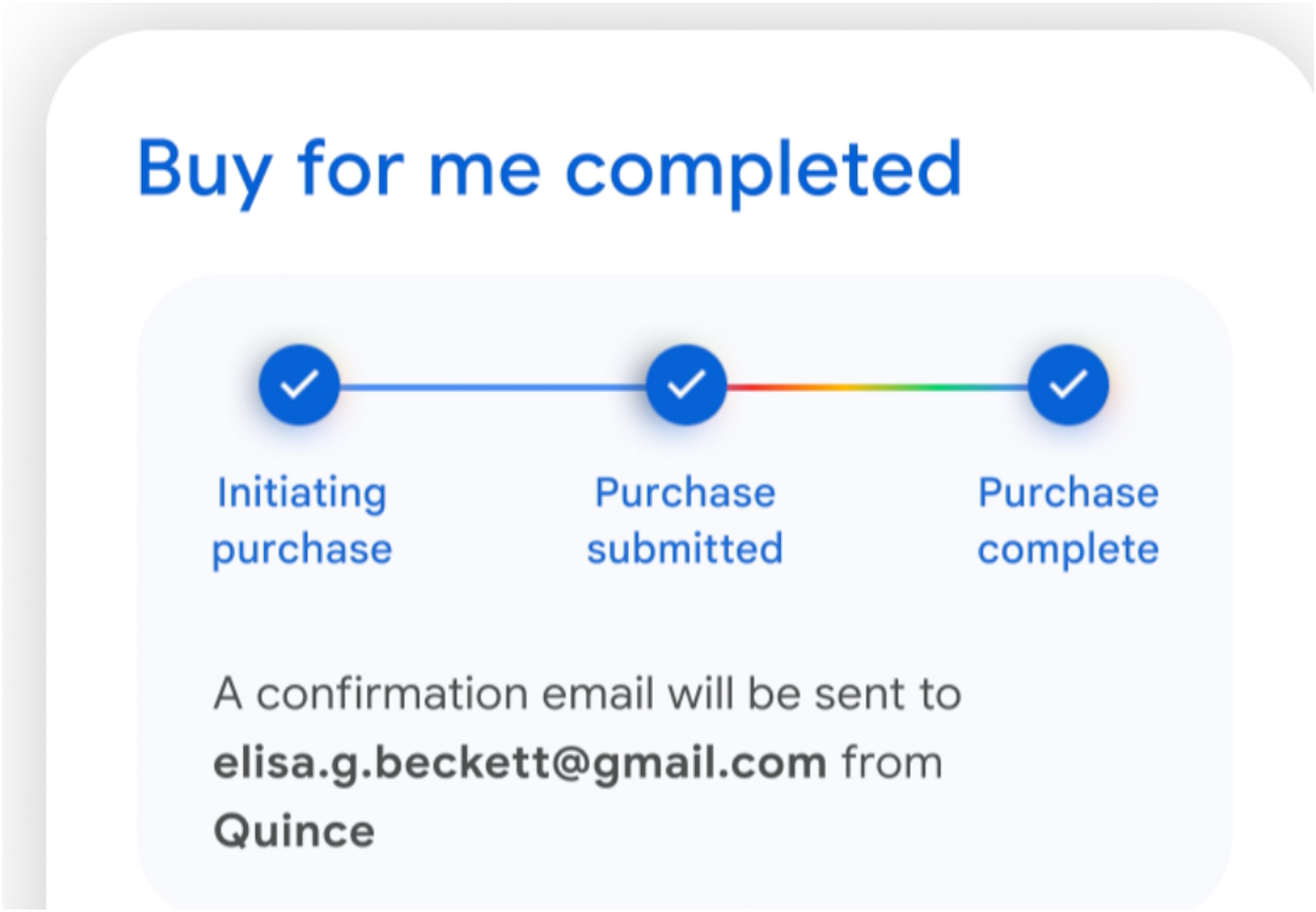Google's Shopping Agent: Great on Surface, but Two Fatal Flaws.
Google comes out swinging, leapfrogging ChatGPT Shopping with a full AI Shopping Agent from Research, to Find to 'Buy for me' and a live Agentic Checkout demo.
Victory lap! 🏆
First, allow me a moment to take a victory lap. When news leaked last week of a Google ‘Pinterest killer’ , I said:
“I’m going to go out on a limb here and say this makes zero sense to me and has to be wrong. When the rest of their big competitors are paddling as hard as they can to Agentic shopping, I find it very very low probability that Google would be swimming the other way. They’ve had 15 years to compete with Pinterest, why now? Perhaps the early reviewer didn’t realize they were looking at an agentic shopping front end?”
Phew, turns out I was right, and in the second hour of a very dense keynote with a ton of other GenAI announcements. They announced a bunch of shopping AI enhancements. Since this is Retailgentic, we’re going to focus on the new AI Agent and give you a step-by-step walk-through and analysis.
Google flips from ‘Predicted’ to ‘Announced’
In honor of today’s big reveal, we are flipping our Google / Gemini AI shopping agent tile that was in the ‘predicted’ status to ‘announced’.
How the Google AI Shopping Agent works.
On May 20th, at the 10am PT keynote, Google announced: “A new level of intelligence to help you shop.” They talked a bit about all the shopping data Google has
(I assume this is from Google Shopping, but they didn’t say this exactly and 50B product listings is an unusually large number?!) and then, finally, they showed the agent in action and said that it is coming ‘in months’.
Google Agent - Research
In the AI Mode of traditional search, if you enter a commercial product search/ask a chat, they will show you this new mosaic of products. Note the chat persists in the left frame and as you add more context, the mosaic updates with refinements. Note the ‘product mosaic tiles’ includes the price and merchant.
Also note that, very like Perplexity, they have follow-up canned suggestions and a ‘ask anything’ to continue to refine.
Google Agent - Find - The First Flaw
As you refine and look at the products and get to the ‘find mode’, what you have to do is click into one of the mosaic tiles and a product detail summary ‘overlay’ appears, like this:
I put the red box on here because it’s a bit hard to see the pop up (I think they need to refine this UX element a bit).
Note that you have a color/variation picker, you can save the product and Track the price and visit the site.
Wait…what?! Where’s the ‘Buy for me’ button?
That my friends is the weird part - I’ve now watched two different demos and they all have this weird user experience.
🤷♂️
You have to FIRST track the price, then get a price alert before you cay ‘buy for me’ 🤷♂️
In both demos, they knock 20-30% off: (in this example going for $95 on a $119 bag - 20.2% discount)→
Google Agent - Buy (from a price drop alert)
Finally, when the user receives a notification that the price tracker has been triggered (both demos show this on a phone format):
NOW the user can hit the ‘Buy for me’ button and, finally a ‘your agent is about to do stuff’ page is presented for final confirmation from the user - the Agentic checkout!
A couple of checkout observations:
They are using Google Pay to solve the payment issue going ‘in network’
They’ve pulled in shipping and tax
They are using nearly the same UX as Amazon, even down to the ‘Buy for me’ nomenclature.
Once you approve the agent, it has yet another user-experience very close to Amazon’s agentic flow - Three dynamic checkmarks are checked in sequence. The top of the page says “Buy for me in process” This may take several minutes. Then once you have:
Initiatied purchase ✅
Purchase submitted ✅
Purchase complete ✅
You get this screen that now says ‘buy for me completed’ and an email confirmation is sent:
Note that unlike Amazon that implements an ‘email redirect’ so they can parse the email to tell you shipping details and what-not, it looks like at this point forward post-transaction activities are between you and the merchant.
Conclusion: Inspire / Shop / Pay || Research / Find / Buy
Summarizing this part of the keynote they had this graphic that talks about the new functionality - it looks like they are breaking this down to Inspire (the mosaic) shop - the tracker? and then Pay.
I’d say if it weren’t for the weird ‘you have to track/alert to buy’ thing I’d give this an A+ - it’s a great experience and quite smooth. I’m going to go out on another limb and say that by the time this is released this oddity of the UX will be fixed and you’ll have a track OR ‘Buy for me’ button on that product detail overlay. Stay tuned.
The Second Flaw: GPay
The one limiter to both Amazon and the Google solution is the requirement that the merchant implement their proprietary wallet. The Flaw here is this constraint significantly limits the number of merchants you can buy from and thus the available product set is ultimately going to be very small. For example, no Amazon, no Walmart, most of the larger omnichannel companies don’t take Google Pay. Here’s a sneak peak at our Agentic payment post coming next week - note that GPay didn’t even make the chart so it must be sub 10% of the top 1000 (by sales) retailers.
If you have the most amazing agentic shopping, but the payment option limits it to sub 10% of the transactions online, what’s the point?
Of course both the ‘track to buy’ is an easy fix. The GPay payment flaw is more theological. Will Google step outside it’s comfort zone and allow a user to pay with other mechanisms? Only time will tell on this one.
Want to learn more?
After the keynote, Google posted this handy blog.
I also recommend watching the keynote portion that covers this - it’s super tight at ~7 minutes and starts at 1hr, 2mins. You can watch it in-line here→
Thanks for reading, we’ll keep the news rolling! The best way to make sure you are on top of all things agentic shopping is to….













Congrats on the prediction. Seems like Google is still cooking on this, as you mentioned the UX is clunky when it comes time to buy. But the look of the initial product discovery experience seems nice.... and I see PLENTY of space for ads, too!! :)
On your point about google leapfrogging ChatGPT, I expect to see many return-serves in the near future as Fidji Simo (ex Instacart CEO) takes the helm of OpenAI's applications division. Exciting tings to come.